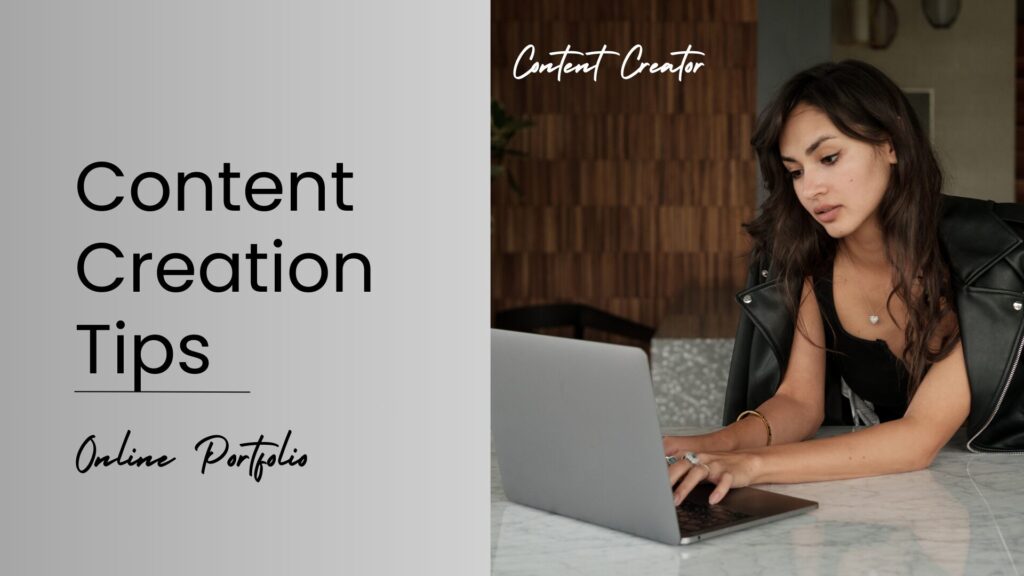Content Creation Tips
Content Creation: Crafting Engaging Content That Drives Results
In today’s digital age, content creation has become the cornerstone of successful online marketing strategies. Whether you’re a blogger, a business owner, or a social media influencer, the ability to produce compelling content is essential for capturing and retaining the attention of your target audience. In this article, we’ll explore the ins and outs of content creation, including its importance, different types, steps involved, tips for effectiveness, tools available, challenges, and more.

Content Creation Tips
1. Introduction
What is content creation?
Content creation refers to the process of generating engaging material for online consumption. This can include written articles, blog posts, social media updates, videos, podcasts, infographics, and more.
Importance of content creation
In today’s competitive digital landscape, high-quality content is the key to standing out from the crowd. It not only helps in attracting and retaining customers but also builds brand credibility, improves SEO rankings, and fosters customer loyalty.
2. Types of Content
Text-based content
Text-based content includes articles, blog posts, ebooks, and social media updates. It’s one of the most common forms of content creation and is highly effective for conveying detailed information and engaging with the audience.
Visual content
Visual content encompasses images, videos, infographics, and memes. It’s essential for capturing the audience’s attention quickly and conveying information in a visually appealing way.
Audio content
Audio content includes podcasts, music, and audiobooks. With the rise of platforms like Spotify and Apple Podcasts, audio content has become increasingly popular and is a great way to reach audiences on the go.
3. Steps in Content Creation
Research
Before creating any content, it’s essential to conduct thorough research to understand your target audience, their needs, preferences, and pain points. This will help you tailor your content to resonate with them effectively.
Planning
Once you have a clear understanding of your audience, it’s time to plan your content strategy. This involves brainstorming ideas, outlining the structure of your content, and setting goals and objectives.
Creation
With a solid plan in place, it’s time to start creating your content. Whether you’re writing an article, filming a video, or recording a podcast, focus on delivering value to your audience and maintaining consistency in your brand voice and messaging.
Editing
After creating your content, it’s crucial to edit and proofread it carefully. This includes checking for grammatical errors, ensuring consistency in style and tone, and optimizing for SEO.
4. Tips for Effective Content Creation
Know your audience
Understanding your audience’s demographics, interests, and preferences is crucial for creating content that resonates with them. Tailor your content to address their needs and pain points effectively.
Use storytelling
Storytelling is a powerful tool for capturing the audience’s attention and conveying your message in a memorable way. Use anecdotes, case studies, and personal experiences to make your content more engaging and relatable.
Optimize for SEO
Optimizing your content for search engines is essential for improving its visibility and driving organic traffic to your website. This involves using relevant keywords, creating high-quality content, and optimizing meta tags and descriptions.
5. Tools for Content Creation
Content management systems
Content management systems like WordPress, Joomla, and Drupal make it easy to create, edit, and publish content online. They offer features like customizable templates, plugins, and built-in SEO tools to streamline the content creation process.
Graphic design tools
Graphic design tools like Canva, Adobe Photoshop, and Illustrator are essential for creating visually appealing images and infographics for your content. They offer a wide range of templates, fonts, and graphics to bring your ideas to life.
Audio editing software
Audio editing software like Audacity, Adobe Audition, and GarageBand are essential for creating high-quality podcasts and music tracks. They offer features like multi-track editing, noise reduction, and sound effects to enhance the audio quality.
6. Challenges in Content Creation
Writer’s block
Writer’s block is a common challenge faced by content creators, where they struggle to come up with new ideas or find inspiration. Overcoming writer’s block requires taking breaks, seeking inspiration from other sources, and experimenting with different writing techniques.
Time constraints
Creating high-quality content takes time and effort, which can be challenging when juggling multiple tasks and deadlines. To overcome time constraints, prioritize your tasks, delegate where possible, and use tools and templates to streamline the content creation process.
Maintaining quality
Maintaining quality is essential for building trust and credibility with your audience. To ensure quality, focus on delivering value, adhering to best practices, and seeking feedback from your audience regularly.
7. Conclusion
In conclusion, content creation is a critical aspect of online marketing and branding strategies. By understanding the importance of content creation, leveraging different types of content, following a structured approach, implementing effective tips and tools, and overcoming challenges, you can create engaging content that drives results for your business or personal brand.
FAQs (Frequently Asked Questions)
1. What is the role of SEO in content creation? SEO plays a crucial role in content creation by improving visibility and driving organic traffic to your website. By optimizing your content for relevant keywords and search intent, you can increase its chances of ranking higher in search engine results.
2. How can I overcome writer’s block? To overcome writer’s block, try taking breaks, engaging in activities that inspire you, experimenting with different writing techniques, and seeking inspiration from other sources such as books, movies, or nature.
3. What are the benefits of using visuals in content creation? Visuals help capture the audience’s attention quickly, convey information more effectively, and make content more engaging and shareable on social media platforms.
4. How can I maintain consistency in my content creation efforts? To maintain consistency, create a content calendar, establish a regular posting schedule, adhere to your brand voice and messaging, and seek feedback from your audience to ensure you’re meeting their expectations.
Pros:
- Comprehensive Coverage: The article provides a thorough overview of content creation, covering various aspects such as types, steps, tips, tools, and challenges, which ensures readers gain a comprehensive understanding.
- Structured Format: The use of headings and subheadings organizes the content logically, making it easy for readers to navigate and comprehend the information effectively.
- Engaging Writing Style: The conversational tone and use of informal language enhance reader engagement, making the content more enjoyable and relatable.
- Actionable Tips: The article offers practical tips for effective content creation, empowering readers with actionable insights they can implement in their own strategies.
Cons:
- Lengthy: The article’s length may be overwhelming for some readers, potentially leading to decreased engagement or abandonment before completion.
- Lack of Visuals: While the article discusses visual content, it could benefit from the inclusion of relevant images or examples to further illustrate key points and enhance comprehension.
Limited Depth: Some sections, such as “Tools for Content Creation,” provide only a brief overview and could benefit from more in-depth exploration or specific recommendations.
Thanks for reading this content







One Comment